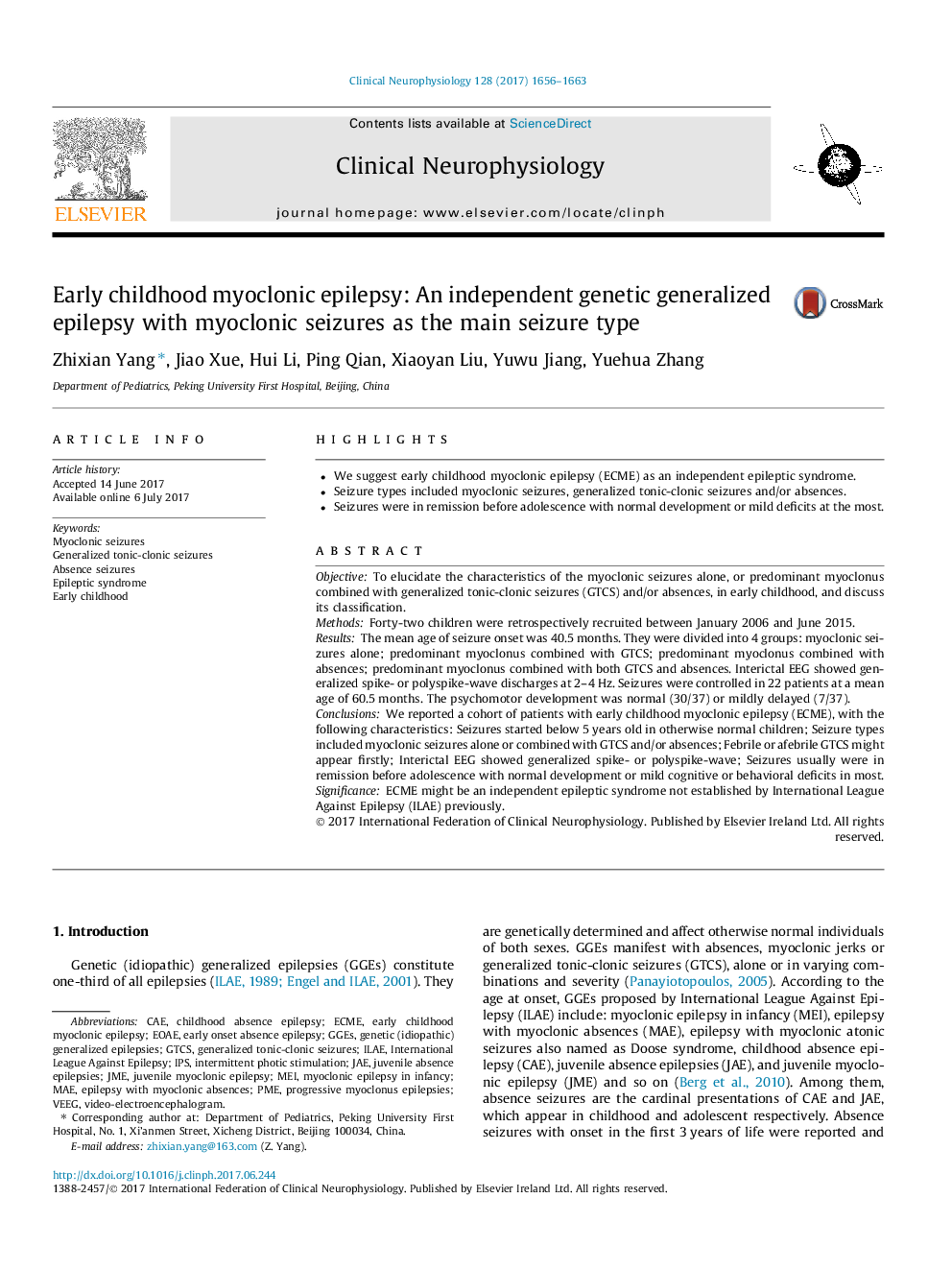| Article ID | Journal | Published Year | Pages | File Type |
|---|---|---|---|---|
| 5627232 | Clinical Neurophysiology | 2017 | 8 Pages |
â¢We suggest early childhood myoclonic epilepsy (ECME) as an independent epileptic syndrome.â¢Seizure types included myoclonic seizures, generalized tonic-clonic seizures and/or absences.â¢Seizures were in remission before adolescence with normal development or mild deficits at the most.
ObjectiveTo elucidate the characteristics of the myoclonic seizures alone, or predominant myoclonus combined with generalized tonic-clonic seizures (GTCS) and/or absences, in early childhood, and discuss its classification.MethodsForty-two children were retrospectively recruited between January 2006 and June 2015.ResultsThe mean age of seizure onset was 40.5Â months. They were divided into 4 groups: myoclonic seizures alone; predominant myoclonus combined with GTCS; predominant myoclonus combined with absences; predominant myoclonus combined with both GTCS and absences. Interictal EEG showed generalized spike- or polyspike-wave discharges at 2-4Â Hz. Seizures were controlled in 22 patients at a mean age of 60.5Â months. The psychomotor development was normal (30/37) or mildly delayed (7/37).ConclusionsWe reported a cohort of patients with early childhood myoclonic epilepsy (ECME), with the following characteristics: Seizures started below 5Â years old in otherwise normal children; Seizure types included myoclonic seizures alone or combined with GTCS and/or absences; Febrile or afebrile GTCS might appear firstly; Interictal EEG showed generalized spike- or polyspike-wave; Seizures usually were in remission before adolescence with normal development or mild cognitive or behavioral deficits in most.SignificanceECME might be an independent epileptic syndrome not established by International League Against Epilepsy (ILAE) previously.
